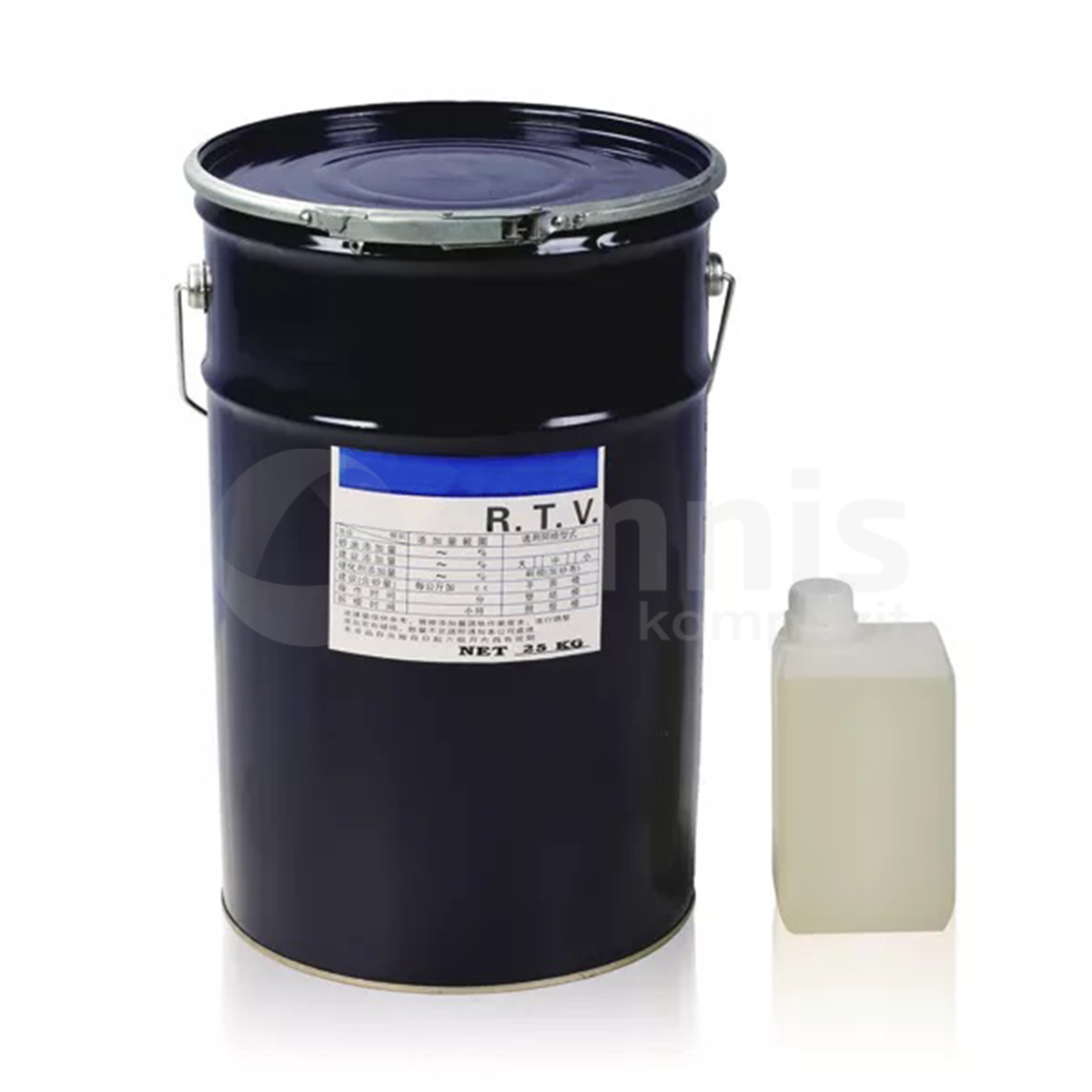RTV2 Mold Silicone

RTV2 Mold Silicone
ReviewWhat is RTV2 Mold Silicone?
RTV2 Silicone is a rubber material that reacts at normal room temperature and can be formed to the desired consistency. RTV is an abbreviation of the English word Room Temperature Vulcanization. Omnis Composite offers RTV2 silicone base material products to users according to their application areas. Silicone has the potential to cover a wide range of hardnesses from 4 shore A to 62 Shore A.
For the use of RTV2 mold silicone sealant,
-Silicon resin is formed by means of a catalyst.
-The fluidity of the silicone resin is perfect for catalyst incorporation and casting.
-With resins with too much fluidity, the desired quality of casting cannot be achieved and too many bubbles form in the product.
-It is desirable that no sediment forms at the bottom of the silicone resin. If there is sediment, a filler has been added to the resin to save money. Filling reduces the quality of silicone very much.
-Quality RTV silicone rubber does not squirt oil as soon as it is formed.
-The mold created with quality RTV silicone can be easily used on 112 weaving and over.
What is RTV2 Mold Silicone Used For?
Silicone mold material is used in a wide variety of fields such as vehicles, food, gifts and building construction.
is utilized. This material exists with an anti-roughness surface and does not retain air bubbles inside. These molds are flexible and can be used for many years without any problems.
One of the most remarkable features of these molds is that they are cheaper than other mold materials. These silicone materials are liquid. Silicone molds can be used for many different needs such as soap, candles, scented rocks, polyester, porcelain, chocolate, marble. This mold silicone is a type of mold that makes it possible to work with different casting materials.
Silicone mold material has recently become more in demand. This mold material has many advantages. These can be listed as follows:
-Provides the advantage of use for operations such as augmentation and duplication.
-Since the silicone mold material has a liquid structure, different materials are not needed to remove the product.
-It has an advantageous use as it does not stick to the surface it is used on or to what is inside it.
-The silicone mold provides extreme resistance to tearing with separation. It can last a long time even under rough use.
-It differs from different mold types because it is flexible.
-Can withstand even high temperatures. For this reason, it is a very functional choice for different sectors.
-It is resistant to chemicals. For this reason, it can be used in many industrial sectors.
-The most noticeable advantage for users of silicone mold material is the easy and quick removal of air bubbles.
-It performs rapid ovalization.
-It can be used for many years.
-Casting life in silicone molds can reach 132 castings.
RTV2 How to prepare a silicone mold?
1.Making it suitable for use
The top of the actual mold must be clean. If your products have thick counter views and perforated surfaces, a suitable mold release agent must be used.
Mixing
In preparation for the use of silicon, it is stirred for at least 39 seconds without the addition of catalyst. It increases the mixing fluidity and plays an effective role in homogenizing the chemical materials in the silicone. In the casting preparation process, the necessary preliminary work is carried out and the casting process must be completed without wasting time. It must be absolutely certain that the silicon is thoroughly/homogeneously mixed from the moment the catalyst is added. The air bubbles formed after the mixing process are evacuated by means of a vacuum device.
Silicone Pouring and Curing
After the casting of the silicone, intervention is carried out until the curing is completed. For optimum casting performance, casting should be started at least 1 day after curing. It is recommended by professionals to wash and clean the mold at certain intervals during casting.


